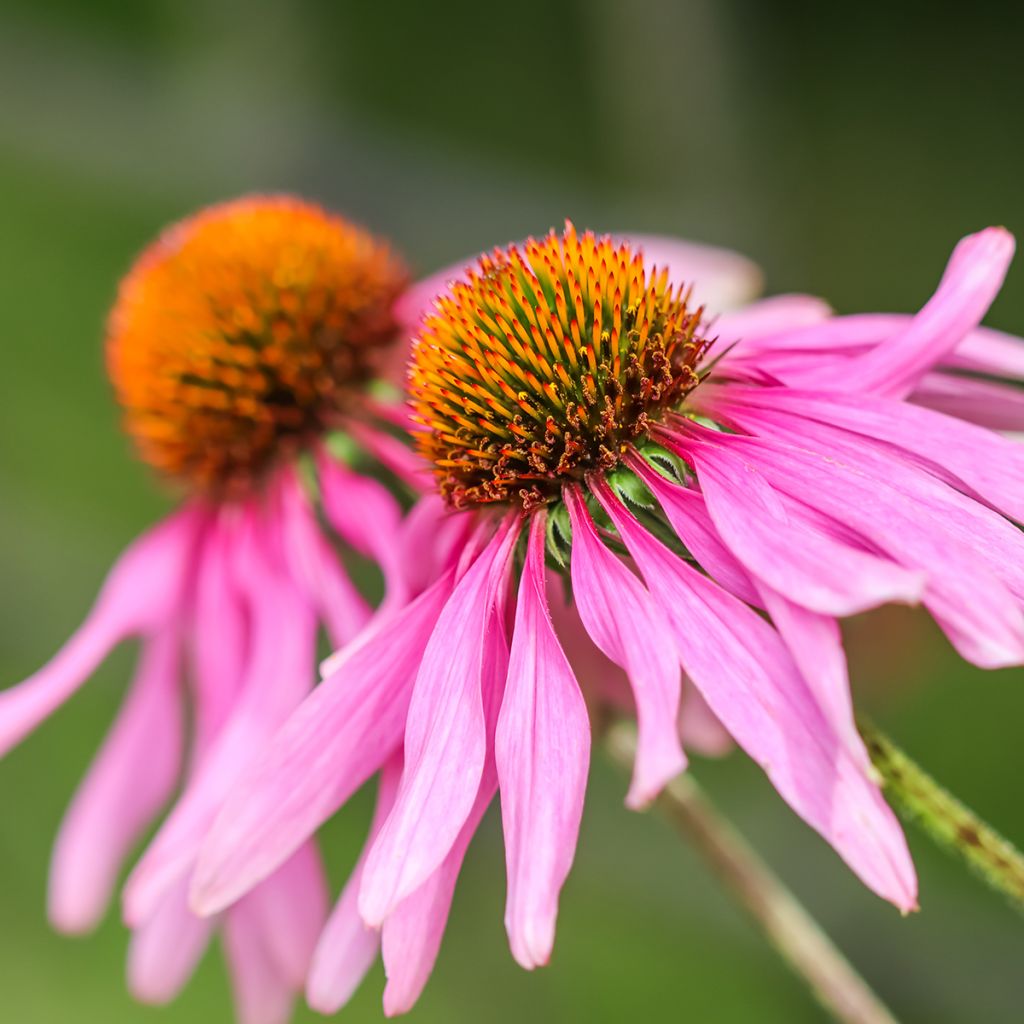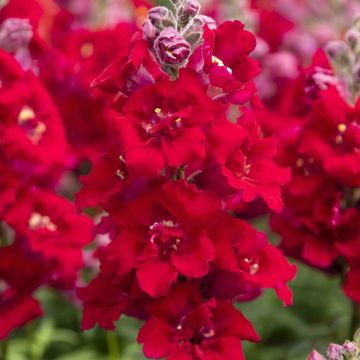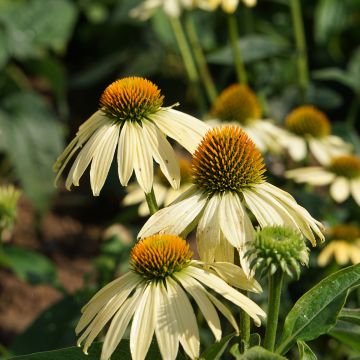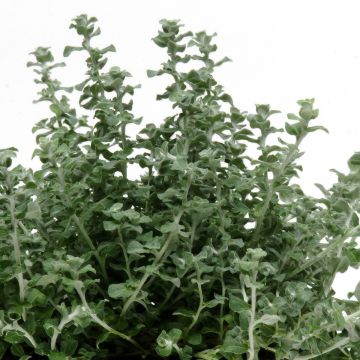

Echinacea purpurea Feeling Pink - Purple coneflower seeds
Echinacea purpurea Feeling Pink - Purple coneflower seeds
Echinacea purpurea Feeling Pink
Eastern purple coneflower, Purple coneflower
Special offer!
Receive a €20 voucher for any order over €90 (excluding delivery costs, credit notes, and plastic-free options)!
1- Add your favorite plants to your cart.
2- Once you have reached €90, confirm your order (you can even choose the delivery date!).
3- As soon as your order is shipped, you will receive an email containing your voucher code, valid for 3 months (90 days).
Your voucher is unique and can only be used once, for any order with a minimum value of €20, excluding delivery costs.
Can be combined with other current offers, non-divisible and non-refundable.
Home or relay delivery (depending on size and destination)
Schedule delivery date,
and select date in basket
This plant carries a 6 months recovery warranty
More information
We guarantee the quality of our plants for a full growing cycle, and will replace at our expense any plant that fails to recover under normal climatic and planting conditions.
Would this plant suit my garden?
Set up your Plantfit profile →
Description
This very floriferous variety of Echinacea purpurea, 'Feeling Pink' is covered, all summer long, with numerous pink flower heads with an orange heart. These are excellent cut flowers and they bring joy to bees and other pollinating insects. It forms a compact, upright clump 60 cm tall and 40 cm wide, perfect for pots. It also thrives in a sunny border with well-drained soil. Hardy and drought-resistant, it is easy to sow and grow.
From the Asteraceae family, Echinacea purpurea is a herbaceous perennial endemic to North America. It grows in the dry prairies of the eastern United States or in sparsely wooded areas, heathlands or cultivated land. Rudbeckia 'Feeling Pink' forms a dense clump about 60 cm tall and 40 cm wide. From June to September, it is covered in numerous, 6 to 7 cm diameter flower heads. Their petals are pink and slightly trailing, and they have a prominent, orange-brown heart. Its deciduous leaves are dark green and its stems are hairy.
The compact, 'Feeling Pink' variety is ideal in a pot on a balcony or terrace, where it will reward you with its generous flowering. In the garden, plant it in the sun, ideally in moistand well-drained soil. Cold-resistant and drought-resistant Echinacea purpurea 'Feeling Pink' is an easy plant that will fit in any garden. For a natural garden, pair it with the grass Stipa capillata. Play with shades of pink with phlox paniculata Europa and Eupatorium maculatum Atropurpureum. In a romantic style with contrasting elements, combine it with Echinacea JS Engeltje Pretty Parasols with its astonishing bicoloured, pink and white flowers, and David Austin Gabriel Oak, an English rose with dark purple-pink flowers.
Report an error about the product description
Flowering
Foliage
Plant habit
Botanical data
Echinacea
purpurea
Feeling Pink
Asteraceae
Eastern purple coneflower, Purple coneflower
Cultivar or hybrid
Other Flower seeds A to Z
View all →Planting and care
Sow the seeds of 'Feeling Pink' Echinacea indoors from March to May in seed trays filled with seed compost, kept at 20-25°C. Soak the seeds in warm water until they swell. This promotes germination, which can take between 5 and 20 days depending on the conditions. Do not cover the seeds too much as they need light to germinate. When your plants have 4 leaves, transplant them into pots. Gradually acclimatise them to outdoor conditions for 10 to 15 days. When your plants are large enough to handle and when all risk of frost has passed, plant them in the sun in moist, well-drained soil, in pots or a bed, with a distance of 20 cm between each plant.
You can also sow directly in place, from May to July (daytime temperatures of at least 20°C), in well-prepared soil. Thin out the sowing to leave only one plant every 20 cm, in full sun.
This is an easy perennial plant that requires no special care and is highly resistant to pests and diseases. Only snails and slugs threaten its young leaves in spring. Remove faded flowers as they appear. You can keep the last few in place at the end of flowering, they will dry and provide a decorative touch during winter. Every year, before the vegetation resumes in spring, clean the clump.
Sowing period
Intended location
This item has not been reviewed yet - be the first to leave a review about it.
Similar products
Haven't found what you were looking for?
Hardiness is the lowest winter temperature a plant can endure without suffering serious damage or even dying. However, hardiness is affected by location (a sheltered area, such as a patio), protection (winter cover) and soil type (hardiness is improved by well-drained soil).

Photo Sharing Terms & Conditions
In order to encourage gardeners to interact and share their experiences, Promesse de fleurs offers various media enabling content to be uploaded onto its Site - in particular via the ‘Photo sharing’ module.
The User agrees to refrain from:
- Posting any content that is illegal, prejudicial, insulting, racist, inciteful to hatred, revisionist, contrary to public decency, that infringes on privacy or on the privacy rights of third parties, in particular the publicity rights of persons and goods, intellectual property rights, or the right to privacy.
- Submitting content on behalf of a third party;
- Impersonate the identity of a third party and/or publish any personal information about a third party;
In general, the User undertakes to refrain from any unethical behaviour.
All Content (in particular text, comments, files, images, photos, videos, creative works, etc.), which may be subject to property or intellectual property rights, image or other private rights, shall remain the property of the User, subject to the limited rights granted by the terms of the licence granted by Promesse de fleurs as stated below. Users are at liberty to publish or not to publish such Content on the Site, notably via the ‘Photo Sharing’ facility, and accept that this Content shall be made public and freely accessible, notably on the Internet.
Users further acknowledge, undertake to have ,and guarantee that they hold all necessary rights and permissions to publish such material on the Site, in particular with regard to the legislation in force pertaining to any privacy, property, intellectual property, image, or contractual rights, or rights of any other nature. By publishing such Content on the Site, Users acknowledge accepting full liability as publishers of the Content within the meaning of the law, and grant Promesse de fleurs, free of charge, an inclusive, worldwide licence for the said Content for the entire duration of its publication, including all reproduction, representation, up/downloading, displaying, performing, transmission, and storage rights.
Users also grant permission for their name to be linked to the Content and accept that this link may not always be made available.
By engaging in posting material, Users consent to their Content becoming automatically accessible on the Internet, in particular on other sites and/or blogs and/or web pages of the Promesse de fleurs site, including in particular social pages and the Promesse de fleurs catalogue.
Users may secure the removal of entrusted content free of charge by issuing a simple request via our contact form.
The flowering period indicated on our website applies to countries and regions located in USDA zone 8 (France, the United Kingdom, Ireland, the Netherlands, etc.)
It will vary according to where you live:
- In zones 9 to 10 (Italy, Spain, Greece, etc.), flowering will occur about 2 to 4 weeks earlier.
- In zones 6 to 7 (Germany, Poland, Slovenia, and lower mountainous regions), flowering will be delayed by 2 to 3 weeks.
- In zone 5 (Central Europe, Scandinavia), blooming will be delayed by 3 to 5 weeks.
In temperate climates, pruning of spring-flowering shrubs (forsythia, spireas, etc.) should be done just after flowering.
Pruning of summer-flowering shrubs (Indian Lilac, Perovskia, etc.) can be done in winter or spring.
In cold regions as well as with frost-sensitive plants, avoid pruning too early when severe frosts may still occur.
The planting period indicated on our website applies to countries and regions located in USDA zone 8 (France, United Kingdom, Ireland, Netherlands).
It will vary according to where you live:
- In Mediterranean zones (Marseille, Madrid, Milan, etc.), autumn and winter are the best planting periods.
- In continental zones (Strasbourg, Munich, Vienna, etc.), delay planting by 2 to 3 weeks in spring and bring it forward by 2 to 4 weeks in autumn.
- In mountainous regions (the Alps, Pyrenees, Carpathians, etc.), it is best to plant in late spring (May-June) or late summer (August-September).
The harvesting period indicated on our website applies to countries and regions in USDA zone 8 (France, England, Ireland, the Netherlands).
In colder areas (Scandinavia, Poland, Austria...) fruit and vegetable harvests are likely to be delayed by 3-4 weeks.
In warmer areas (Italy, Spain, Greece, etc.), harvesting will probably take place earlier, depending on weather conditions.
The sowing periods indicated on our website apply to countries and regions within USDA Zone 8 (France, UK, Ireland, Netherlands).
In colder areas (Scandinavia, Poland, Austria...), delay any outdoor sowing by 3-4 weeks, or sow under glass.
In warmer climes (Italy, Spain, Greece, etc.), bring outdoor sowing forward by a few weeks.



















































